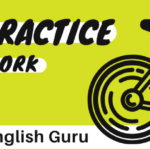Understanding the difference between “has” and “have” is essential for constructing grammatically correct sentences. Both words are forms of the verb “to have”, which means to possess, own, or experience something. However, their usage depends on the subject of the sentence and the tense being used.

In this blog post, we will discuss the rules for using “has” and “have”, provide examples, cover common mistakes, and explore how they function in different grammatical contexts.
Understanding “Has” and “Have”
Both “has” and “have” indicate possession, relationships, illnesses, experiences, and obligations. The key difference between them lies in their subject agreement.
Basic Rule:
- “Has” is used with singular subjects (he, she, it, and singular nouns).
- “Have” is used with plural subjects (I, you, we, they, and plural nouns).
🔹 Examples of “Has”:
✔ She has a beautiful garden.
✔ The dog has a red collar.
✔ My brother has a new job.
🔹 Examples of “Have”:
✔ I have two brothers.
✔ They have a big house.
✔ We have a lot of work to do.
When to Use “Has”
The word “has” is used with singular third-person pronouns (he, she, it) and singular nouns.
1. With Singular Subjects
✔ He has a new laptop.
✔ She has a meeting at 10 AM.
✔ The school has a large playground.
2. In Present Perfect Tense
When forming the present perfect tense, “has” is used with singular subjects.
✔ She has lived in London for five years.
✔ The movie has started already.
✔ He has visited Paris twice.
3. To Show Possession
✔ My friend has a black car.
✔ The shop has fresh fruits.
✔ He has a good idea.
4. In Expressions and Fixed Phrases
✔ He has no clue about the surprise.
✔ The teacher has an interesting way of teaching.
✔ She has a strong personality.
When to Use “Have”
The word “have” is used with I, you, we, they, and plural nouns.
1. With Plural Subjects
✔ I have a new bicycle.
✔ They have three children.
✔ We have a great plan for the weekend.
2. In Present Perfect Tense
“Have” is used in the present perfect tense with I, you, we, they and plural nouns.
✔ I have finished my homework.
✔ They have seen that movie before.
✔ We have visited the museum twice.
3. To Indicate Possession
✔ You have a great sense of humor.
✔ My parents have a beautiful house.
✔ The students have a lot of homework.
4. In Expressions and Fixed Phrases
✔ I have no idea what you mean.
✔ They have a point in their argument.
✔ We have an issue to discuss.
Common Mistakes and How to Avoid Them
Here are some frequent errors when using “has” and “have”:
❌ Incorrect: He have a dog.
✔ Correct: He has a dog.
❌ Incorrect: She have completed the project.
✔ Correct: She has completed the project.
❌ Incorrect: They has a big house.
✔ Correct: They have a big house.
❌ Incorrect: We has been waiting for an hour.
✔ Correct: We have been waiting for an hour.
“Has” vs. “Have” in Questions and Negatives
When forming questions and negative sentences, the helping verb “does” is used with “has,” and “do” is used with “have.”
1. In Questions
- Has she finished her work? (Singular subject)
- Have they arrived yet? (Plural subject)
- Have you ever been to New York?
2. In Negative Sentences
- He does not have any siblings. (Not “has”)
- She doesn’t have enough time.
- They do not have a car.
Using “Has” and “Have” in Present Perfect Sentences
In the present perfect tense, “has” and “have” are used as auxiliary (helping) verbs before the past participle of the main verb.
🔹 Examples with “Has” (Singular Subject)
✔ She has eaten breakfast already.
✔ The movie has started.
🔹 Examples with “Have” (Plural Subject)
✔ I have seen that show before.
✔ We have completed our work.
Quick Recap: When to Use “Has” and “Have”
| Subject | Use “Has” | Use “Have” |
|---|---|---|
| I | ❌ | ✔ I have a book. |
| You | ❌ | ✔ You have a pen. |
| He/She/It | ✔ He has a dog. | ❌ |
| We | ❌ | ✔ We have a plan. |
| They | ❌ | ✔ They have a car. |
| Singular Noun | ✔ The boy has a toy. | ❌ |
| Plural Noun | ❌ | ✔ The students have exams. |
Practice Exercises
Now, test your understanding by filling in the blanks with “has” or “have”:
- She ___ a lot of friends.
- They ___ completed their assignments.
- My sister ___ a beautiful dress.
- I ___ a meeting at 2 PM.
- The baby ___ a cute smile.
- You ___ been working hard.
- We ___ visited this place before.
- He ___ an important decision to make.
(Answers: 1. has, 2. have, 3. has, 4. have, 5. has, 6. have, 7. have, 8. has)
Conclusion
The difference between “has” and “have” depends on the subject of the sentence. While “has” is used with singular third-person subjects, “have” is used with plural subjects and “I” or “you.” Understanding these rules will help you avoid common mistakes and improve your English grammar.
Now that you’ve learned how to use “has” and “have” correctly, try practicing by writing your own sentences. If you have any questions, feel free to ask in the comments below! 😊
Related posts:
 Use of ‘A’ and ‘An’ in English Grammar: A Detailed Guide
Use of ‘A’ and ‘An’ in English Grammar: A Detailed Guide
 Top Useful Tips to Learn Prepositions Easily
Top Useful Tips to Learn Prepositions Easily
 Which: Use of Which | Top 20 Most Frequent Phrases That Include Which
Which: Use of Which | Top 20 Most Frequent Phrases That Include Which
 Ride Verb Conjugation Practice Learn English
Ride Verb Conjugation Practice Learn English
 Top 3 English-Speaking Courses in India Spoken English Classes
Top 3 English-Speaking Courses in India Spoken English Classes
 Hindi Se English Tense Seekhen Guruji English Classes Ke Sath
Hindi Se English Tense Seekhen Guruji English Classes Ke Sath
 Along vs Alongside
Along vs Alongside
 How To Learn English With AI
How To Learn English With AI
 Types of Sentences in English Language, Simple Sentences, Compound Sentence, Examples to Elaborate, Easy Tips and Tricks
Types of Sentences in English Language, Simple Sentences, Compound Sentence, Examples to Elaborate, Easy Tips and Tricks




